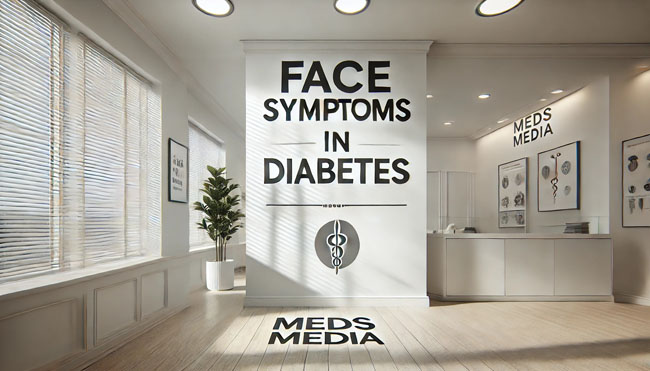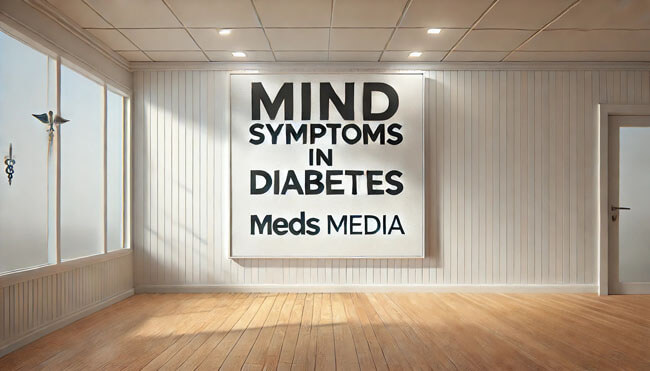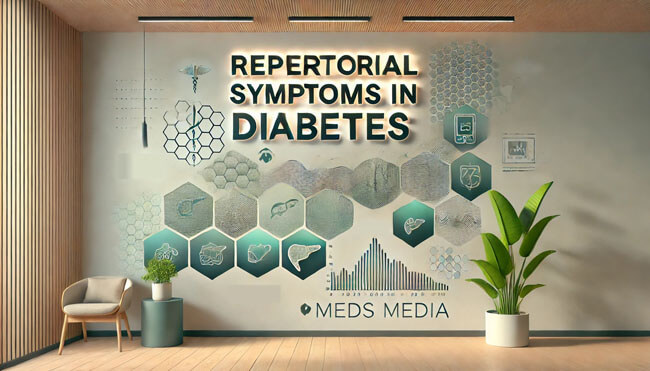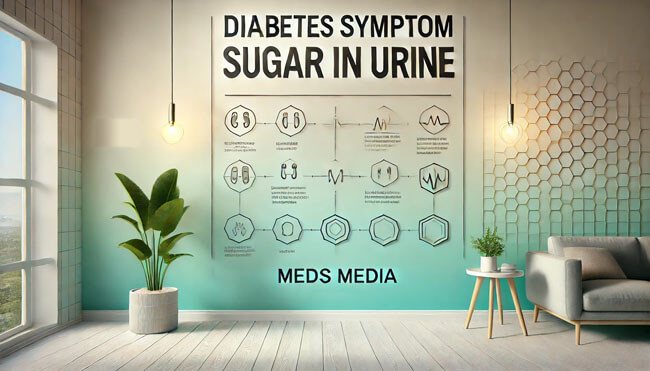Uranium Nitricum is a prominent remedy in homeopathy known for its effectiveness in managing symptoms associated with diabetes. This tutorial offers an in-depth understanding of the symptoms and rubrics where Uranium Nitricum is indicated, structured to educate beginners, doctors, professionals, and the general public.
Key Areas and Conditions Addressed by Uranium Nitricum
Mind
Main Indication: Emotional and mental disturbances linked to diabetes.
- Emotional States: Often used for mental symptoms accompanying diabetes, such as dullness, gloominess, restlessness, sadness, anxiety, irritability, and melancholia.
- Cognitive Symptoms: Addresses memory impairments and mental exhaustion linked to diabetes.
- Specific Symptoms: Effective in managing fear, delusions, and general sluggishness in diabetic patients.
- Depression and Cerebral Issues: Addresses mental fog and depressive states related to diabetes.
Head
Main Indication: Signs of head-related discomforts in diabetic conditions.
- Vertigo:
- Fainting spells, often accompanied by roaring in the ears, associated with diabetes.
- Eyes:
- Circumorbital Darkness: Prominent dark circles around the eyes in diabetes.
- Sunken Eyes: Noticeably sunken eyes observed in diabetic with systemic weakness.
- Diabetic Retinopathy: Helps with inflammation of the retina and other eye-related complications of diabetes.
- Hearing:
- Roaring Sounds and Fainting: Addresses auditory symptoms and fainting spells that may accompany diabetes.
Face
Main Indication: Facial changes indicative of underlying diabetes.
- Emaciation: Cheekbones become pronounced due to significant weight loss.
- Pale Complexion and Earthy Appearance: Effective for diabetics exhibiting an emaciated, sunken, or reddish facial appearance
- Deep Red Face: In some cases, the face may appear deeply flushed.
Mouth
Main Indication: Changes in oral health and sensations in diabetes.
- Cold Tongue: Persistent cold sensation in the tongue.
- Clammy Mouth: Relieves symptoms such as a dry, clammy or Mouth feels sticky.
- Dry Mouth: Accompanied by intense thirst.
- White Tongue: Noticeable whitening of the tongue.
- Dental Issues: Used for spongy gums and parched tongue symptoms.
Stomach
Main Indication: Digestive disturbances often seen in diabetic individuals.
- Acidity: Persistent acidity in the stomach.
- Burning Sensation: Notable in the epigastrium.
- Cramp-like Pain: Discomfort localized to the epigastric region.
- Desire for Tea: An unusual craving for tea.
- Acid Dyspepsia: Indigestion with acidic regurgitation.
- Faintness: A sense of weakness in the stomach region.
- Increased Thirst and Appetite: A need to drink water frequently, ravenous hunger, dyspepsia, and gastralgia often associated with diabetes.
Abdomen and Rectum
Main Indication: Symptoms associated with abdominal and rectal health.
- Constipation: A common complaint among diabetic patients.
- Hemorrhoids: Often exacerbated by diabetes.
Stool
Main Indication: Changes in stool consistency and color in diabetic individuals.
- Dry Stool: Hard and difficult to pass.
- Light-colored Stool: Noticeably pale in color, foul-smelling stools seen in diabetic patients.
- Odorless Stool: In cases where diabetes is relieved, stools lack odor.
- Bowel Symptoms: Treats constipation.
Bladder and Urine
Main Indication: ( Polyuria and Glycosuria ) Addresses excessive urination, sweet-smelling urine and sugar-laden urine, hallmarks of diabetes mellitus.
- Constant Urge to Urinate: Persistent need for urination.
Male Genitalia
Main Indication:
- Male: Effective for erectile dysfunction, reduced sexual desire, and scrotal swelling.
Female Genitalia
Main Indication: Reproductive system disturbances in diabetic women.
- Amenorrhea: Absence of menstruation linked to diabetes.
- Menses Disturbances: Irregularities in menstrual cycles and amenorrhea in diabetic women.
- Suppressed Menses: Complete cessation of menstruation.
Extremities
Main Indication: Symptoms affecting the limbs.
- Crawling Sensation: A tingling or crawling feeling in the limbs.
- Formication: Sensation of insects crawling under the skin.
- Swelling: Noticeable swelling in the legs.
- Tired Legs: A persistent feeling of fatigue.
- Inability to Walk: Severe difficulty in mobility.
- Numbness and Tiredness: Relieves symptoms of heaviness, numbness, and tiredness in limbs.
- Diabetic Gangrene: Useful for managing gangrene in the feet or limbs caused by diabetes.
Sleep
Main Indication: ( Disturbed Sleep Patterns ) Addresses sleeplessness and frequent awakenings due to excessive urination or profuse sweating.
- Sleeplessness: Difficulty falling or staying asleep.
- Obstinate Sleepiness: Excessive and unrelenting drowsiness.
Skin
Main Indication: Skin conditions often found in diabetes.
- Clammy Skin: Persistent moisture on the skin.
- Dry Skin: Noticeable dryness.
- Induration: Thickened or hardened areas of the skin.
- Dryness and Blackness: Treats clammy, and blackened skin, often seen in advanced diabetes.
- Gangrene: Indicated for diabetic gangrene and chronic skin conditions.
Respiratory System
- Dyspnea: Alleviates difficulty in breathing linked to diabetes.
Back
- Lumbar Pain: Commonly used for lower back pain and sensations often associated with kidney involvement in diabetes.
Fever/Chill
- Sweating and Chills: Effective for night sweats and chills experienced by diabetic patients.
General Symptoms
Main Indication: Broad systemic effects of diabetes.
- Diabetes Mellitus: Indicated in cases accompanied by:
- Abdominal distension (tympanitic).
- Indigestion of gastro-hepatic origin.
- Emaciation and significant weight loss.
- Pulse Changes: Accelerated or small pulse rates.
- Sweating:
- Night sweats with a sweetish or fetid odor.
Rubrics and Symptoms Addressed by Uranium Nitricum
Neurological Symptoms
- Vertigo and mental dullness are common indications.
Digestive System
- Manages acidity and persistent thirst associated with diabetes.
Metabolic Effects
- Addresses significant weight loss and emaciation, hallmark symptoms in diabetics.
Specialized Applications in Diabetes Management
Uranium Nitricum is particularly effective in managing diabetic complications such as:
- Gangrene: A severe complication that involves tissue death, often addressed effectively with Uran-n.
- Neuropathy: Helps alleviate nerve-related symptoms, including numbness and tingling.
- Chronic Skin Conditions: Useful for long-term skin issues linked to diabetes.
Here are the diabetes-related symptoms of Uranium Nitricum
Here are the diabetes-related symptoms of Uranium Nitricum
- General Symptoms of Diabetes:
- Excessive thirst, especially at night.
- Enormous quantity of urine (up to 16 pints in 24 hours).
- Urine often pale, milky, or straw-colored, with a fetid or ammoniacal odor.
- Sweet-smelling perspiration and breath.
- Emaciation and general debility.
- Intense thirst and constant hunger (canine hunger).
- Specific gravity of urine significantly high, often containing glucose.
- Urinary Symptoms:
- Frequent urination during the day and profuse nocturnal urination.
- Incontinence of urine at night and frequent urination during the day.
- Burning sensation in the urethra with very acid urine.
- Urinary tenesmus and diuresis.
- Urine containing sugar; specific gravity decreased during treatment.
- Frequent urination in children and adults, often accompanied by thirst and emaciation.
- Constitutional Symptoms:
- Craving for raw ham and tea during diabetic episodes.
- Restlessness at night due to thirst.
- Loss of sleep (sleeplessness associated with diabetes).
- Constipation often observed alongside diabetes.
- Bloated abdomen and pale, odorless, dry feces.
- Additional Observations:
- Symptoms improving with decreased urine specific gravity.
- Pain and soreness in the lumbar region.
- Cold, relaxed, and sweaty sexual organs, with diminished sexual power (impotence).
- Episodes of faintness, especially at the stomach, after eating.
- Night sweats, prostration, and weakness.
- Diabetes Mellitus:
- Common signs include thirst, hunger, and increased urine volume.
Similar Posts

Remedy for Diabetes rheumatic pains in homeopathy

Mouth Symptoms in Diabetes:Homeopathic Medicines and Their Indications

Face Symptoms in Diabetes:Homeopathic Medicines and Their Indications

Hearing Symptoms in Diabetes:Homeopathic Medicines and Their Indications

VISION: Diabetes Symptoms and Homeopathic Medicines

Eyes-related symptoms in diabetes: Homeopathic Medicines and Their Indications

Head-related symptoms in diabetes: Homeopathic Medicines and Their Indications

Vertigo Symptoms in Diabetes: Insights for Homeopathic Treatment

Mind Symptoms in Diabetes: Rubric, and Homeopathic Remedies

Repertorial Symptoms Related to Diabetes Mellitus and Its Complications

Homeopathic Medicines and Concomitants for Managing Diabetes

Diabetes: Causes, Miasms, and Homeopathic Medicines

Diabetes and Homeopathy: Effective Remedies According to Boericke’s Materia Medica

Diabetes and Sugar in Urine: Homeopathic Remedies

